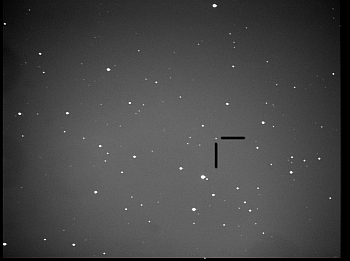The first was the quasar 3C 48 in Triangulum, one of the first to be identified as such--as a "quasi-stellar object", a radio source coming from an apparently point source, and yet stronger than any radio emissions previously identified from stars.
In 1960-62, using two radio telescopes in Owens Valley, astronomers Thomas Matthews and Allan Sandage were able to zero in on the location of the radio source to within 10 arcseconds, and the only object in the field was a 16th magnitude "star". And for two years, they noted its optical variability, its lack of any motion across the sky, and a very faint nebulosity associated with it, with a non-descript spectra. And yet, the QSO remained to the astronomers studying it only a potentially Milky Way object, something obviously further than "close" in the galactic sense, but far enough away to be stellar in appearance and non-moveable.
After submitting a paper about three of these objects in 1963, Matthews and Sandage get word that Schmidt has discovered that another QSO has a significant redshift (which is published in Nature in March 1963), and this allows them the scientific freedom to reinterpret their own spectra as a high-redshift spectrum of z=0.367.

22 minutes total exposure, Click to enlarge. 10-inch f/6 reflector and Starlight Express SXV-H9 camera
Here's another CCD image from Anthony Ayiomamitis of the quasar.
1 comment:
nice to read about this quasar, a colleague of mine was studying this last year, he checks the astronomers telegram daily to see if it is ever acting up again, I'm sharing this page with him in an email momentarily.
www.astronomerstelegram.org
is the site , but i'm sure you know of it.
I am a comet tracker so I get my cometary info from it.
enjoying your work sir.
Post a Comment